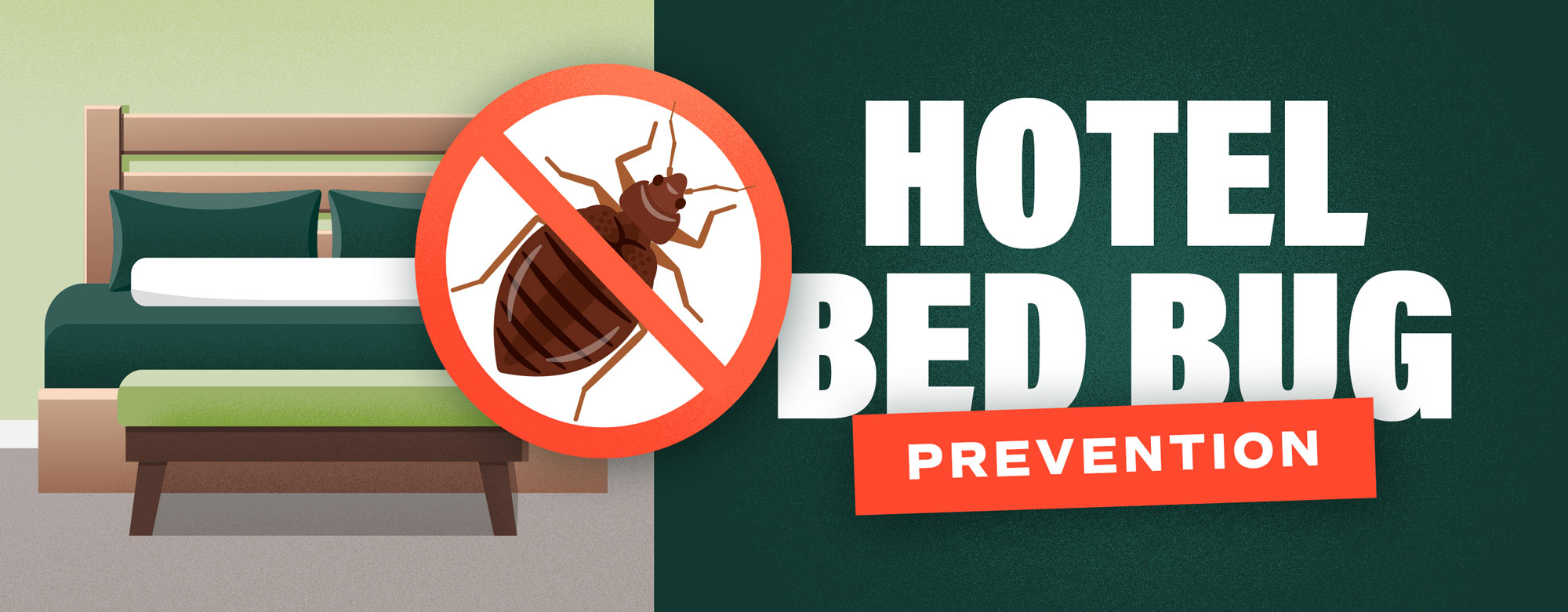
How Hotels Can Help Prevent Bed Bugs
Last updated on 12/22/2023Bed bugs are a rising problem that can cause significant issues for businesses in the hospitality industry. These tiny pests can quickly infest a room or an entire facility, leading to customer complaints, negative reviews, and potential financial losses. Preventing bed bug infestations is crucial to maintaining a clean and comfortable environment for your guests. Thankfully, there are effective strategies and products to help you prevent bed bugs from becoming a problem in your establishment. By following these recommendations, you can reduce the risk of bed bug infestations, help protect your guests and staff, and work to maintain a positive reputation for your business.
What Are Bed Bugs?
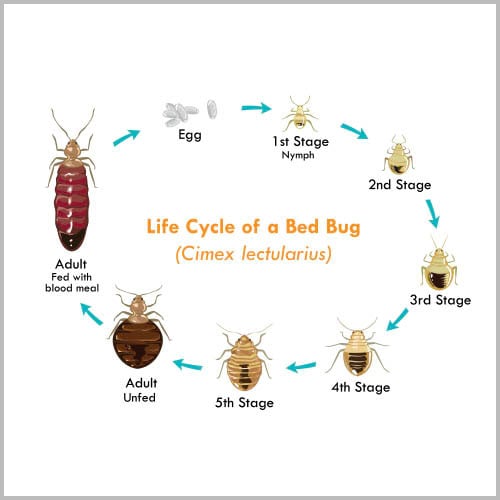
Bed bugs are small, nocturnal insects that feed on the blood of humans and animals while they sleep. While they’re only about the size of an apple seed, their bites can cause itching, allergic reactions, and sleep disturbances. Thankfully, they are not known to transmit diseases. However, they cause extreme discomfort and can ruin the reputation of a hospitality business.
Bed bugs are excellent hitchhikers and can easily be transported from one location to another. They’re attracted to warmth and carbon dioxide, so they tend to infest areas where people spend a significant amount of time such as hotels, dormitories, and even public transportation. Contrary to popular belief, bed bugs are not a sign of poor hygiene or cleanliness. They can infest even the cleanest of environments.
How Do You Get Bed Bugs?
Understanding how bed bugs are spread is crucial in preventing infestations in commercial settings. Here are some important facts about how bed bugs are typically acquired:
- Travel: Bed bugs are excellent hitchhikers and can easily latch onto luggage, clothing, and personal belongings. They often infest hotels, motels, and other types of lodging establishments, which can then spread to homes and businesses.
- Used Furniture and Clothing: Bed bugs can hide in used furniture, such as mattresses, couches, and chairs. They can also be found in secondhand clothing, especially in items stored in infested areas.
- Public Spaces: Bed bugs can be found in public areas such as movie theaters, libraries, and public transportation. They can easily crawl onto clothing or bags and be brought back to a commercial establishment.
- Guests and Visitors: Bed bugs can be brought into commercial spaces by guests or visitors. They may unknowingly carry bed bugs on their clothing, luggage, or personal items. Providing education and awareness about bed bugs to employees and guests can help prevent infestations.
- Employee Belongings: Bed bugs can also be introduced into a commercial space through employee belongings. It is important for employees to be vigilant and regularly inspect their personal items for any signs of bed bugs. Encouraging employees to store their belongings in designated areas, away from potential infestation sources, can help prevent the spread of bed bugs.
Hotel Bed Bug Protocol
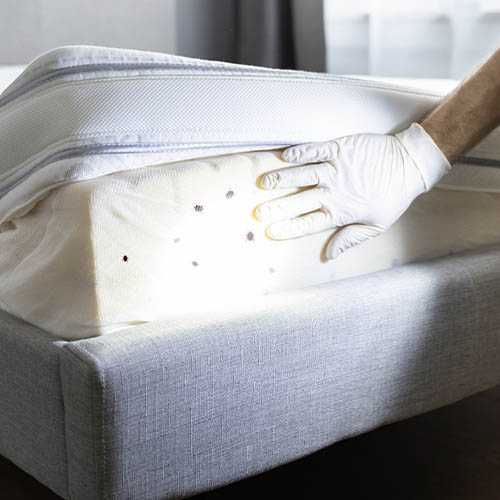
Preventing bed bug infestations requires a multi-faceted approach that includes regular inspections, proper housekeeping practices, and education. By understanding how bed bugs are acquired, commercial establishments can take proactive measures to prevent infestations and maintain a clean and comfortable environment for their customers and employees.
1. Educate Staff on Bed Bugs
When it comes to preventing bed bugs in your establishment, one of the most crucial factors is staff awareness and training. Educated and vigilant staff members play a crucial role in early detection, effective cleaning protocols, regular inspections, proper handling of infested items, and compliance with regulations. Here are some important areas to train your hotel staff in:
- Early Detection: Bed bugs are notorious for their ability to hide in tiny cracks and crevices, making them difficult to spot. However, trained staff members can identify early signs of infestation, such as blood stains on sheets, dark spots on mattresses, or the presence of live bugs. By catching the problem early on, you can take immediate action to prevent further spread.
- Cleaning Protocols: Thorough and regular cleaning is essential to eliminating hiding places for bed bugs. Train staff members in proper cleaning techniques, including vacuuming and steam cleaning, to eliminate any potential homes for these pests. Additionally, they should be aware of the importance of washing bedding and linens at high temperatures to kill any bed bug eggs or nymphs. Make sure you explain the differences between sanitizing and disinfecting surfaces.
- Inspection and Maintenance: Regular inspections of furniture, bedding, and other areas where bed bugs are likely to hide are crucial. Staff members should be trained to look for signs of infestation during these inspections and report any findings to management. Additionally, they should be aware of the importance of promptly addressing any maintenance issues, such as cracks in walls or furniture, that could serve as hiding places for bed bugs.
- Handling of Infested Items: In the unfortunate event of a bed bug infestation, staff members must know how to handle infested items properly. They should be trained in the appropriate procedures for safely bagging and disposing of infested bedding or furniture. This will help prevent further spread of bed bugs and protect both staff and guests from potential bites.
- Awareness of Regulations: Depending on your location, there may be specific rules and regulations regarding bed bug prevention in commercial establishments. Staff members should be familiar with these regulations to ensure compliance and avoid any potential legal issues. This may include guidelines on reporting infestations, proper documentation, and required pest control measures.
What Do Bed Bugs Look Like on a Mattress?
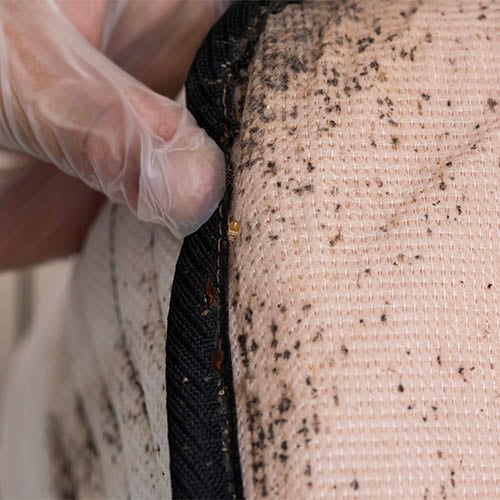
Identifying bed bugs on a mattress can be challenging as they are experts at hiding in small crevices and cracks. However, some signs can help you determine if your mattress is infested:
- Live Bed Bugs: Adult bed bugs are visible to the naked eye and can be found crawling on the mattress surface. They are about 4-5 mm in length and have a distinct reddish-brown color. Bed bugs are most active during the night, so inspecting your mattress during the early morning hours may increase your chances of spotting them.
- Shed Skins: As bed bugs grow and mature, they shed their exoskeletons, leaving behind molted skins. These skins are translucent and can be found near hiding spots on the mattress, such as seams, tufts, and folds. Finding multiple shed skins is a strong indication of a bed bug infestation.
- Fecal Stains: Bed bugs leave behind dark, rust-colored stains on mattresses, sheets, and other surfaces they encounter. These stains are digested blood and are often found in clusters or rows. If you notice small, black dots on your mattress, it could be a sign of bed bug activity.
- Eggs and Eggshells: Bed bug eggs are tiny and difficult to spot with the naked eye. They are about 1 mm in size and are usually white or translucent. Look for these eggs and their empty shells in the seams, crevices, and other hidden areas of your mattress.
- Musty Odor: Bed bugs release a musty odor, often described as a sweet with berry essence. If you notice an unusual smell coming from your mattress, it could be an indication of a bed bug infestation.
2. Invest in Bed Bug Resistant Bed Supplies
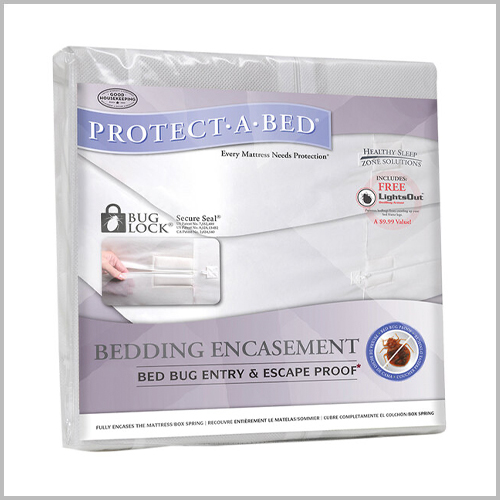
One of the most effective ways to prevent bed bugs is to use bed bug-resistant bed supplies. These specially designed products are made with materials that are difficult for bed bugs to penetrate, making it harder for them to establish a presence in your establishment. Look for bed bug-resistant mattress encasements, box spring encasements, and pillow protectors to create a barrier against these pests.
Bed Bug Encasements and Mattress Protectors
Bed bug encasements and mattress protectors act as a barrier between the mattress and potential bed bug infestations. Made from durable materials such as polyester or polypropylene, these covers are designed to completely encase the mattress, preventing bed bugs from accessing the fabric and hiding in the seams. Look for encasements that are specifically labeled as bed bug-resistant and have been tested to ensure their effectiveness.
Bed Bug Proof Box Spring Covers
Similar to mattress encasements, bed bug-proof box spring covers are essential for protecting the foundation of the bed. These covers are constructed with the same bed bug-resistant materials and are designed to fully encase the box spring, leaving no gaps for bed bugs to enter or escape. By combining mattress encasements with box spring covers, you create a comprehensive bed bug barrier.
Bed Bug Resistant Bed Frames
Bed frames with bed bug-resistant features are another important component in preventing bed bug infestations. These frames are typically constructed with materials that bed bugs cannot easily climb, such as metal or plastic. Additionally, some bed frames have a smooth, seamless design, eliminating potential hiding spots for bed bugs. When selecting a bed frame, look for models that are specifically labeled as bed bug-resistant.
Bed Bug Resistant Pillow Encasements
In addition to encasements and covers, choosing bed bug-resistant pillow encasements can further enhance your bed bug prevention efforts. Bed bug-resistant pillowcases are made from tightly woven fabrics that prevent bed bugs from penetrating the material. They’re also designed to be easily cleaned and laundered, making it easier to eliminate any potential bed bug hitchhikers.
What Material Do Bed Bugs Not Like?
By incorporating synthetic fabrics, vinyl and plastic, metal, leather, and hardwood into your hotel bedding and furniture choices, you can create an environment that is less attractive to bed bugs and promote a healthier, bed bug-free space. While these materials don’t eliminate the risk of bed bug infestations, they can help reduce the likelihood of an infestation and make it easier to detect and treat any potential issues.
- Synthetic Fabrics: Bed bugs are not attracted to synthetic fabrics such as polyester, nylon, and rayon. These materials are less porous and do not provide the same hiding spots and crevices that natural fabrics do. By opting for bedding and furniture made from synthetic fabrics, you can create a less hospitable environment for bed bugs.
- Vinyl and Plastic: Bed bugs have a difficult time crawling on smooth surfaces, such as vinyl and plastic. These materials are not only easy to clean but also provide fewer hiding places for bed bugs. Consider using vinyl mattress covers, plastic furniture covers, or even vinyl or plastic furniture to discourage bed bug infestations.
- Metal: Bed bugs have a hard time climbing smooth surfaces, and metal is no exception. Furniture with metal frames, such as beds and chairs, can make it challenging for bed bugs to access hiding spots. Additionally, metal bed frames often have fewer crevices and seams where bed bugs can hide, making them a less attractive option for these pests.
- Leather: Leather is another material that bed bugs are not particularly fond of. The smooth surface of leather makes it difficult for bed bugs to crawl and hide. Incorporating leather furniture, such as sofas or chairs, into your space can help deter bed bugs from settling in.
- Hardwood: Bed bugs prefer materials that provide hiding spots and crevices, which is why hardwood is not their preferred choice. Furniture made from hardwood, such as oak or maple, has fewer seams and crevices compared to upholstered furniture, making it less appealing to bed bugs.
3. Have an Action Plan
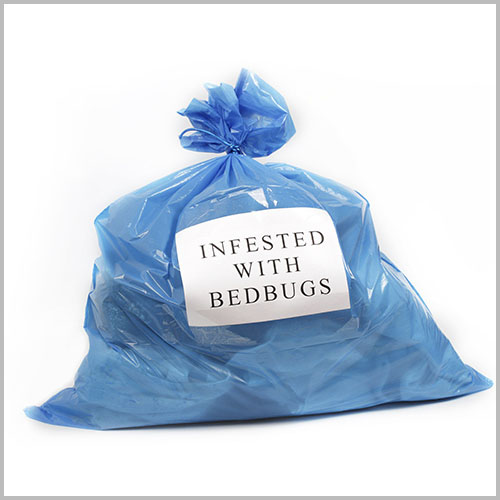
If you suspect the presence of bed bugs in your commercial establishment, it is crucial to have a well-defined action plan in place. By following the steps outlined below, you can effectively address the issue and help prevent the spread of bed bugs to other areas of your property.
- Notifying Management: As soon as your staff becomes aware of a possible bed bug infestation, they must inform management immediately. This will allow you to take the necessary steps to address the issue promptly and efficiently.
- Relocating Guests in Affected Rooms: Making every effort to relocate guests in rooms where bed bugs have been observed is crucial. Move them to unaffected rooms or, if necessary, to another accommodation altogether.
- Documenting Signs of Bed Bugs: Thoroughly document any signs of bed bugs that you come across. This includes noting where and when the bugs were observed, as well as any visible stains or eggs on bedding and furniture. Detailed documentation will be useful when implementing treatment strategies and communicating with pest control professionals.
- Quarantining Affected Rooms: To prevent the spread of bed bugs, it is essential to quarantine the rooms that may be affected. This includes the rooms where guests were relocated to, as bed bugs can easily hitch a ride on luggage or clothing. By isolating these rooms, you can contain the infestation and prevent it from spreading further.
- Launder and Inspect Linens: Wash all potentially infested linens, including bedding, towels, and curtains, in hot water and dry them on high heat. Inspect them carefully for any signs of bed bugs before returning them to use.
- Call in Pest Control Professionals: Contacting a pest control professional is crucial for a thorough assessment of the bed bug issue and the development of an effective treatment strategy. These professionals have the expertise and tools necessary to eradicate bed bugs and prevent future infestations. Follow their recommendations closely to ensure a successful resolution.
- Implement Preventive Measures: Once the infestation is under control, take steps to prevent future bed bug problems. Encase mattresses and box springs in bed bug-proof covers, repair any cracks or crevices in walls or furniture, and regularly vacuum and clean your establishment.
4. Implement a Traveler Awareness Program
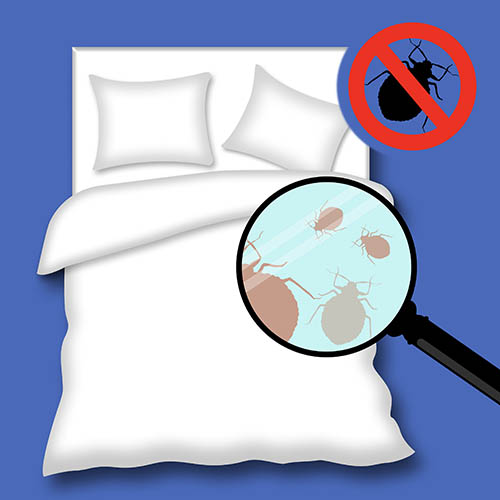
Traveler awareness programs can help hospitality businesses prevent bed bug infestations. These programs educate guests about the risks of bed bugs during their travels and provide tips on how to prevent bringing them into their accommodations. By educating your guests about bed bug prevention and providing them with the necessary tools, you can significantly reduce the risk of bed bug incidents. The program will also help boost guests’ confidence in your establishment and can earn positive online reviews. Here's how to implement a traveler awareness program:
- Develop Educational Materials: Create brochures, pamphlets, or posters that provide information on bed bug prevention. Include details on how to identify bed bugs, what to do if a guest suspects an infestation, and how to prevent bed bugs from spreading. Make sure the materials are easily accessible in common areas such as the lobby, guest rooms, and laundry facilities.
- Communicate with Guests: Upon check-in, provide guests with information about bed bug prevention and what to do if they suspect an infestation. Include this information in welcome packets or on informational cards placed in guest rooms. Consider adding a section on your website or in email communications that highlights your commitment to bed bug prevention.
- Establish a Reporting System: Encourage guests to report any suspected bed bug incidents promptly. Provide a dedicated phone number or email address for reporting concerns and ensure that all reports are handled discreetly and professionally. Respond to reports promptly and take appropriate measures to investigate and address the issue.
Hotel Bed Bug Prevention FAQ
As a hotel owner or manager, it is crucial to prioritize the prevention of bed bugs. These pests can cause significant damage to your reputation and result in costly lawsuits. To help you understand the best practices for preventing bed bugs in your hotel, we have compiled a list of frequently asked questions.
Can Bed Bugs Get through Zippers?
Unfortunately, bed bugs can easily get in through a zipper thanks to their flat and oval-shaped bodies. Adult bed bugs are approximately the size of an apple seed, while nymphs (young bed bugs) are even smaller. Their bodies are incredibly flexible, allowing them to squeeze through openings as small as the width of a credit card.
While they’re designed to close tightly, zippers often have small gaps or spaces between the teeth. These gaps may be barely visible to the naked eye, but they are more than enough for bed bugs to exploit. To prevent bed bugs from infiltrating through zippers, it is essential to take proactive measures. Encasing mattresses and pillows with bed bug-proof covers creates a physical barrier that denies bed bugs access.
Can Bed Bugs Bite through Mattress Encasements?
Bed bugs can bite through mattress encasements unless the fabric is bite-proof. This means that it should be constructed with a dense weave that is resistant to punctures. Bed bugs have a specialized mouthpart called a proboscis, which they use to pierce the skin and extract blood. Therefore, the fabric of the encasement must be strong enough to withstand these piercing attempts and prevent the bugs from reaching their food source.
In addition to its fabric being bite-proof, the mattress encasement must cover the entire mattress or box spring. Bed bugs are notorious for their ability to hide in small cracks and crevices, so leaving any part of the mattress exposed could provide an entry point for these pests. Equally important is the proper installation of the mattress encasement. The encasement must be sealed tightly with no openings, gaps, or tears that bed bugs might escape through. Even the smallest opening can provide an opportunity for these pests to escape the encasement and continue infesting your sleeping area.
How Long Do You Leave a Bed Bug Mattress Cover On?
To ensure that all bed bugs and their eggs have died, experts recommend leaving the bed bug encasement on for at least one year. This extended period allows for the complete life cycle of the bed bugs to be disrupted and eradicated. Bed bugs go through several stages of development, including egg, nymph, and adult. By leaving the encasement on for a year, you can be confident that any eggs that may have been missed during initial treatment will have hatched and died off. Removing the encasement too soon may result in a re-infestation if any bed bugs or eggs are still present.
During the year that you have the bed bug encasement on, it is essential to regularly inspect and monitor for any signs of bed bugs. This includes conducting visual inspections of the mattress and surrounding areas, as well as using bed bug traps or monitors to detect any activity. If you notice any signs of bed bugs, such as live bugs, eggs, or fecal stains, it is recommended to continue using the encasement until you are confident that the infestation has been eliminated.
Back to TopRemember, prevention is always better than dealing with a full-blown infestation. By implementing these prevention strategies and training your staff, you can significantly reduce the risk of bed bugs in your hotel and protect your guests' comfort and satisfaction. Knowing that you’re taking extra precautions can attract travelers to your lodging establishment.






